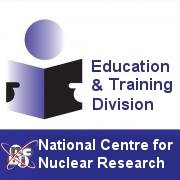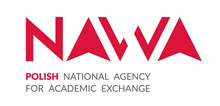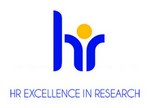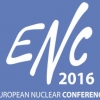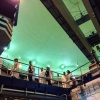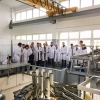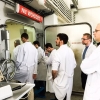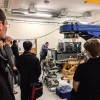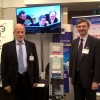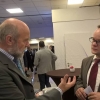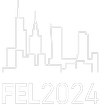European Nuclear Conference 2016
2016.10.10 12:51 - adminThe largest in Europe nuclear conference held in Warsaw between October 9 and 13, 2016 is a forum where experts, decision-makers, and representatives of nuclear industry from all over the world can share their experience and discuss innovations, nuclear safety issues, applications, and generally the future of nuclear industry. NCBJ co-organized the conference and attendees are expected to visit Świerk.
European Nuclear Conference 2016 was opened by Dr Józef Sobolewski, Director of Nuclear Power Department in Polish Ministry of Energy. Session topics include applications of nuclear technologies in industry/medicine/national economy, search for new technical solution to facilitate development of modern reactors, nuclear fuel, nuclear waste management, safety and security of nuclear facilities, education and building social acceptance for nuclear power. That prestigious event was principally organized by European Nuclear Society, while NCBJ, IAEA Vienna, American Nuclear Society, and Polish Nucleonic Society were co-organizing the event. The conference is held under the honourable patronage of Minister of Energy.
„The fact that Warsaw has been selected as the conference venue is a great honour for Poland. It is also a recognition of our involvement on the international arena/contribution made by our R&D centres, and expression of a strong interest in the programme to develop the first nuclear power plant in Poland” – said Professor Grzegorz Wrochna, NCBJ Director Proxy for International Cooperation and Chairman of European Nuclear Cogeneration Industrial Initiative (NC2I) – „I am convinced that nuclear power may be a driving force of country’s economic development. Our involvement in development of the HTR reactor technology may be one of key factors on which Poland’s success on the international arena may depend”.
The project todevelop HTR reactors is the first so significant R&D project on new generation reactors ever taken in Poland since transformation of the country’s political system. It has placed Poland among countries implementing state-of-the-art nuclear technologies. A dedicated task-force appointed in Ministry of Energy is currently studying (under the leadership of Professor Grzegorz Wrochna) feasibility of a successful implementation of the HTR technology in national economy. Experts agree that HTR reactors may significantly reduce consumption of natural gas used as a source of heat needed by chemical industry. Co-generation of electricity and of high-temperature heat is also commercially viable. However, since power generated by each single HTR reactor is relatively low, such reactors are not fit to accomplish the primary objective of the programme to develop nuclear power in Poland, namely to develop plants capable to generate totally 6,000 MW. Świerk researchers would wish a 10 MWt/4 MWe research HTR reactor become operational before 2025. To that end an intention letter with British U-Battery consortium (URENCO, AMEC FW, ATKINS, Cammell-Laird, Laing O’Rourke) was signed on May 24, 2016. Some other UK British companies and French government agencies have also expressed their interest in that venture. Talks on the subject are currently conducted with UK Department of Energy and Climate Change, and with US DoE.
Attendees of the European Nuclear Conference 2016 are expected to visit Świerk, where MARIA, the sole reactor in Poland is operated. The reactor thought of as a research background in the projected to develop the Żarnowiec nuclear power plant quickly found other applications. To day it is a source of high-intensity neutron beams necessary to produce radiopharmaceuticals for nuclear medicine and new engineering materials. The reactor is also used to carry out research in neutron physics and to train professionals in nuclear power/radiation protection. Approximately 80% of all nuclear medicine procedures performed in the world are based on the technetium-99m isotope produced in decays of the molibdenum-99 isotope. In a past period of peak demand, uranium targets irradiated in MARIA were used to produce 18% of global deliveries of Mo-99m. Not long ago MARIA was licensed by suitable authorities for another 10 years of operation. Since the reactor is kept technically up-to-date, one should not expect any problems with getting the licence extended for the next licensing period.
Experience with construction and operation of nuclear reactors is in Poland nearly 60 years long. All the reactors were built and operated in Świerk (to-day: NCBJ). EWA was the first reactor put into operation on June 14, 1958. It used to produce radioisotopes and was delivering (via its horizontal channels) neutron beams for research. It greatly helped to attain by Świerk the status of a recognized R&D centre for nuclear technologies. MARIA was the last reactor put in Świerk into operation (on December 17, 1974). A number of critical sets and the so-called zero-power reactors put into operation in between included MARYLA (two variants), ANNA, Fast ANNA, UR-100, and AGATA.
More on European Nuclear Conference 2016: https: //www. euronuclear. org/events/enc/enc2016/index. htm


